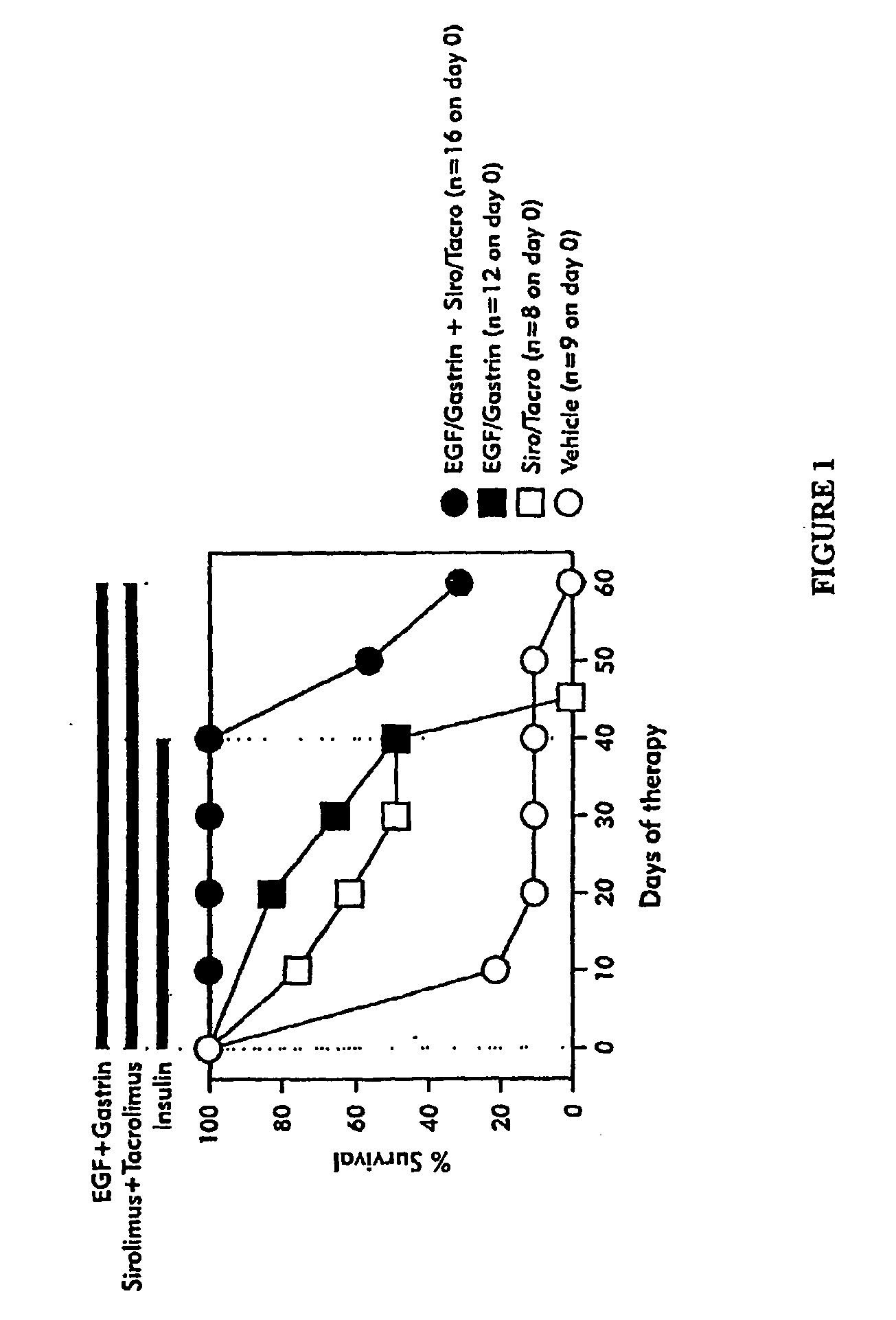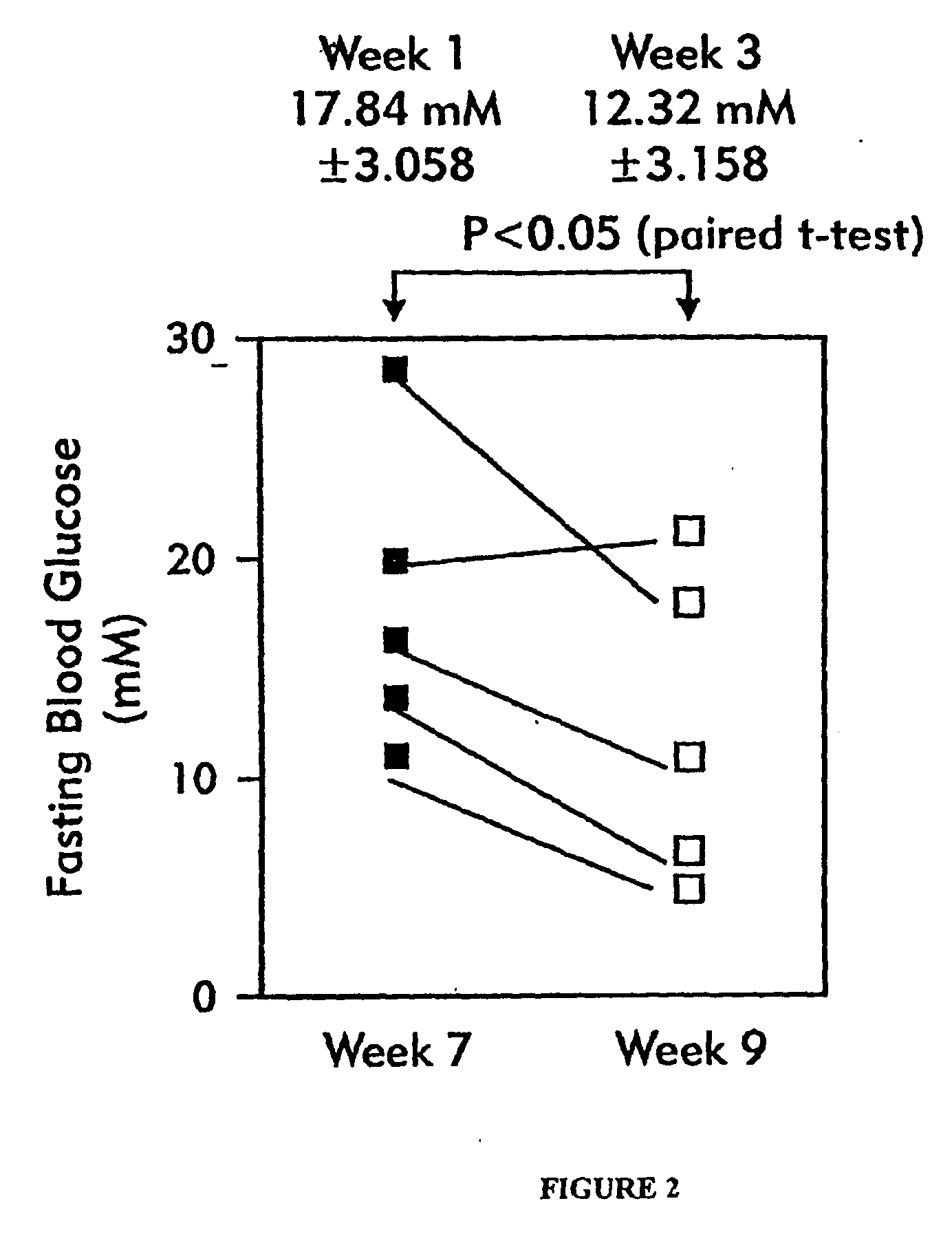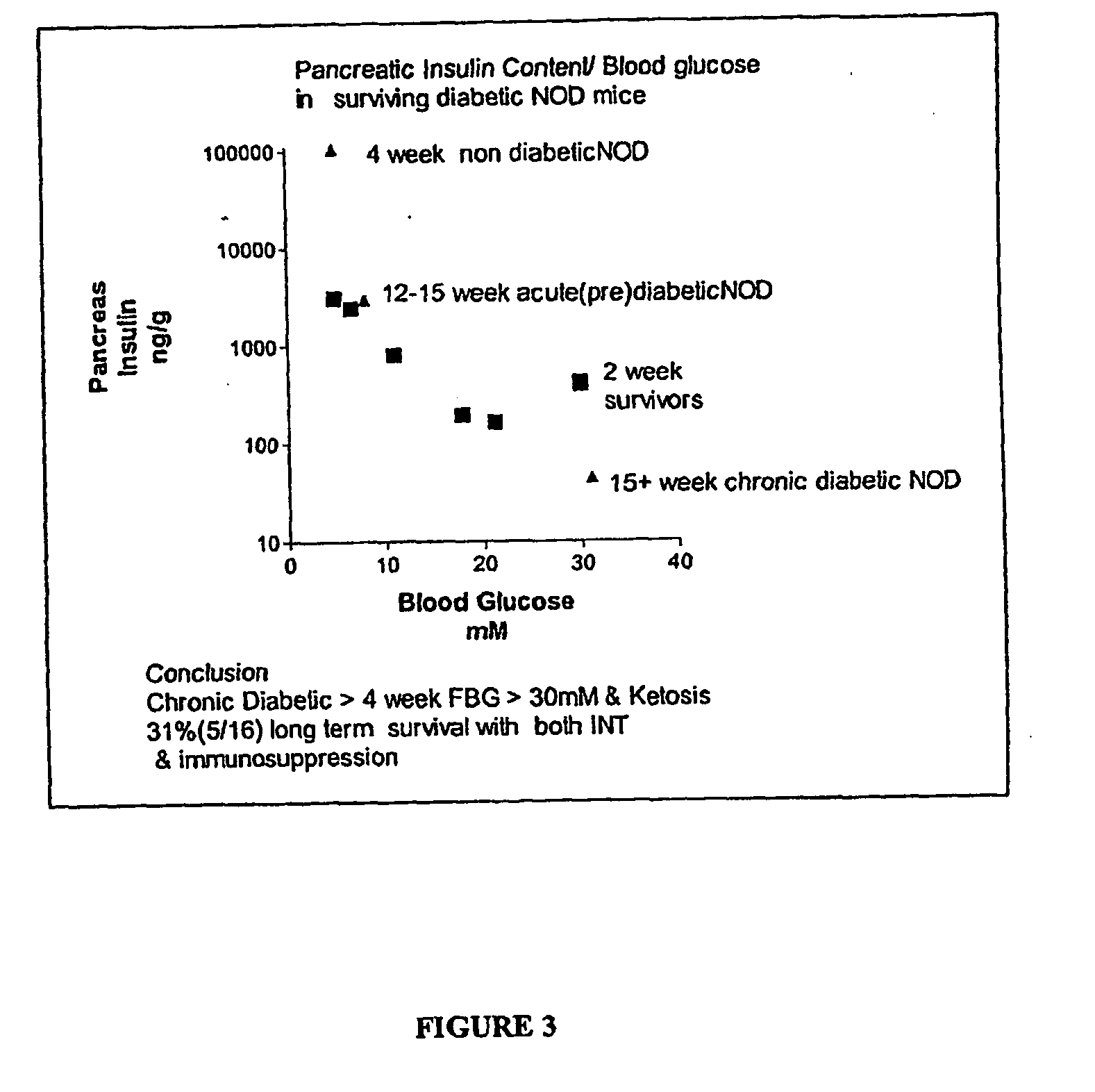Compositions and methods for treating diabetes
a technology for diabetes and compositions, applied in the field of compositions and methods for treating diabetes, can solve the problems of less rigorous control of blood glucose level, pancreatic exhaustion and insulin insufficiency,
- Summary
- Abstract
- Description
- Claims
- Application Information
AI Technical Summary
Benefits of technology
Problems solved by technology
Method used
Image
Examples
example 1
Survival of Animals Treated with an Islet Neogenesis Composition and with a Composition for Immunosuppression
[0085] Using a mouse model herein for chronic diabetes, the NOD mouse, subjects were tested for the effects of agents of immune suppression in conjunction with a composition for I.N.T.™ which is EGF51N and gastrin 17leu15. The design of the experiment in shown in Table 2. Treatments were initiated when subjects were about 25 weeks of age. Subjects were placed into four treatment groups: administration of I.N.T.™ composition (Group 2), the immunosuppressive agents (Group 3), the combination of both (Group 1) or a control group treated only with the vehicle buffer (Group 4). Severely diabetic subjects having blood glucose levels greater than 30 mM (and ketosis) received insulin treatment, administered as a once daily sc injection of a 1:1 mixture of regular (R) pork insulin and NPH(N) beef insulin (0.4 U of total insulin) for 3-4 weeks pretreatment and for 6 weeks during treat...
example 2
Pancreatic Insulin Content of Chronically Diabetic Mice After Treatment with an I.N.T.™ Composition and an Immunosuppressants
[0089] Table 4 contains reference data showing the time course of changes in fasting blood glucose (FBG) and pancreatic insulin content in samples obtained from female NOD mice, as a function of increasing age in of the subjects of this strain of mice. A relationship between these parameters is observed.
[0090] These data show that prior to observing a significant rise in blood glucose in NOD mice, a significant β cell loss has occurred, as indicated by the rapid decline in pancreatic insulin content. By age 10-12 weeks, in pancreatic insulin content decreased 37%, even though FBG remained normal at 4.6 mM. Further, only modest hyperglycemia (FBG 7.4 mM) in NOD mice was observed between ages of 12-15 weeks, despite profound β cell destruction associated with a pancreatic insulin content reduced by greater than 95%. Further, when blood glucose rose to above 30...
example 3
Pancreatic Insulin Content and Plasma C-Peptide Levels of Recent Onset Diabetic Mice After Treatment with an Islet Neogenesis Composition and with a Composition for Immunosuppression
[0095] Non-obese diabetic mice were therefore monitored for an initial appearance of diabetes, by a method involving daily morning testing, to obtain evidence of glucosuria. Monitoring was initiated at 10 weeks of age, and symptoms of glucosuria were assessed using the Keto-Diastix (Bayer). Further, at the time of onset of glucosuria, subjects were further monitored for onset of diabetes by measuring a level of fasting blood glucose (FBG). Using this assay, achieving a level of FBG greater than 6.6 mmol / l for a subject on two consecutive days was selected as defining the onset of diabetes in that subject.
[0096] By using this approach of daily monitoring for diabetes among 800 to 1000 female NOD mice simultaneously, NOD mice were collected within 2-5 days after onset of diabetes. These mice, having ages...
PUM
| Property | Measurement | Unit |
|---|---|---|
| Molar density | aaaaa | aaaaa |
| Molar density | aaaaa | aaaaa |
| Molar density | aaaaa | aaaaa |
Abstract
Description
Claims
Application Information
 Login to View More
Login to View More - R&D
- Intellectual Property
- Life Sciences
- Materials
- Tech Scout
- Unparalleled Data Quality
- Higher Quality Content
- 60% Fewer Hallucinations
Browse by: Latest US Patents, China's latest patents, Technical Efficacy Thesaurus, Application Domain, Technology Topic, Popular Technical Reports.
© 2025 PatSnap. All rights reserved.Legal|Privacy policy|Modern Slavery Act Transparency Statement|Sitemap|About US| Contact US: help@patsnap.com



